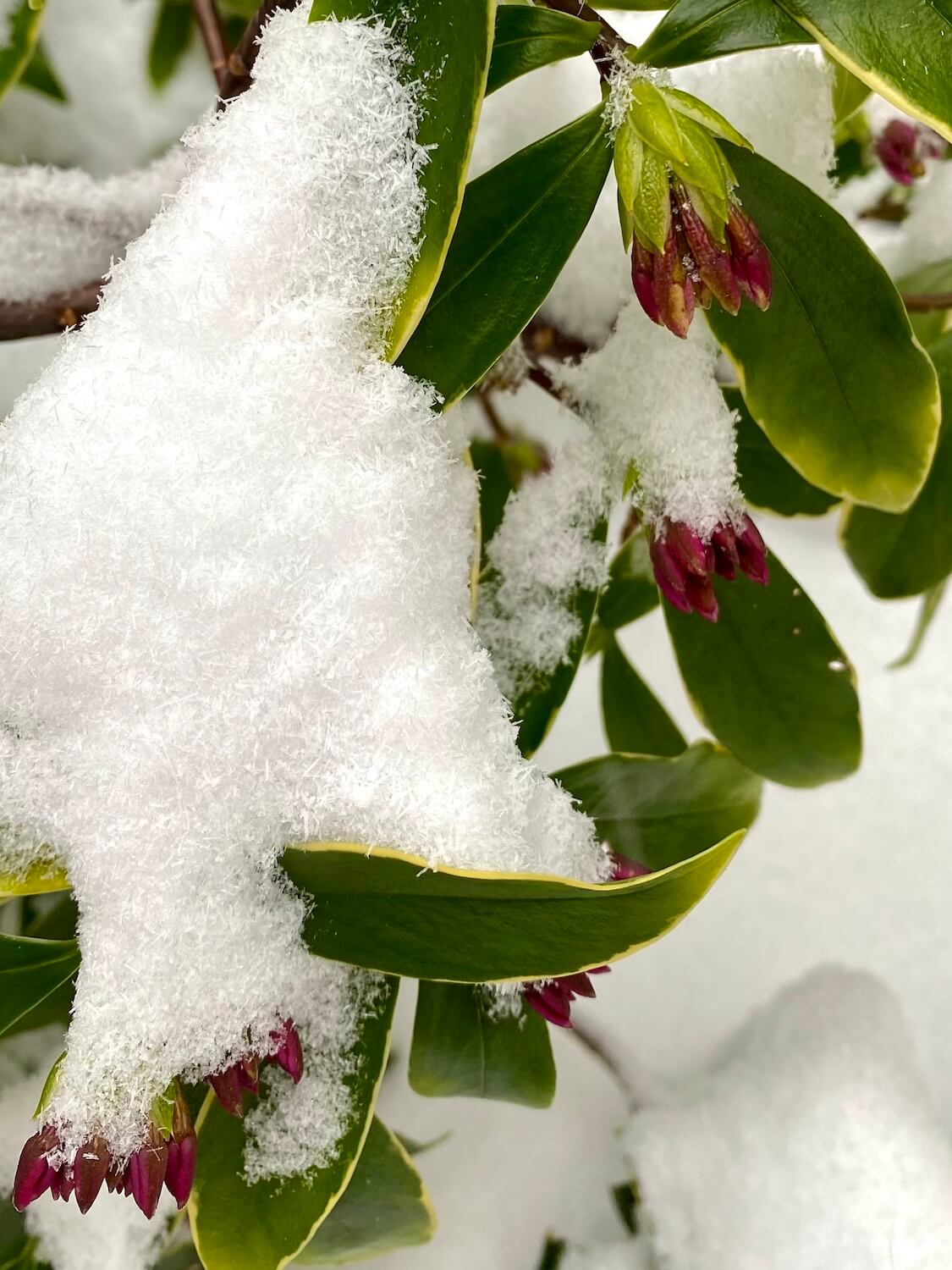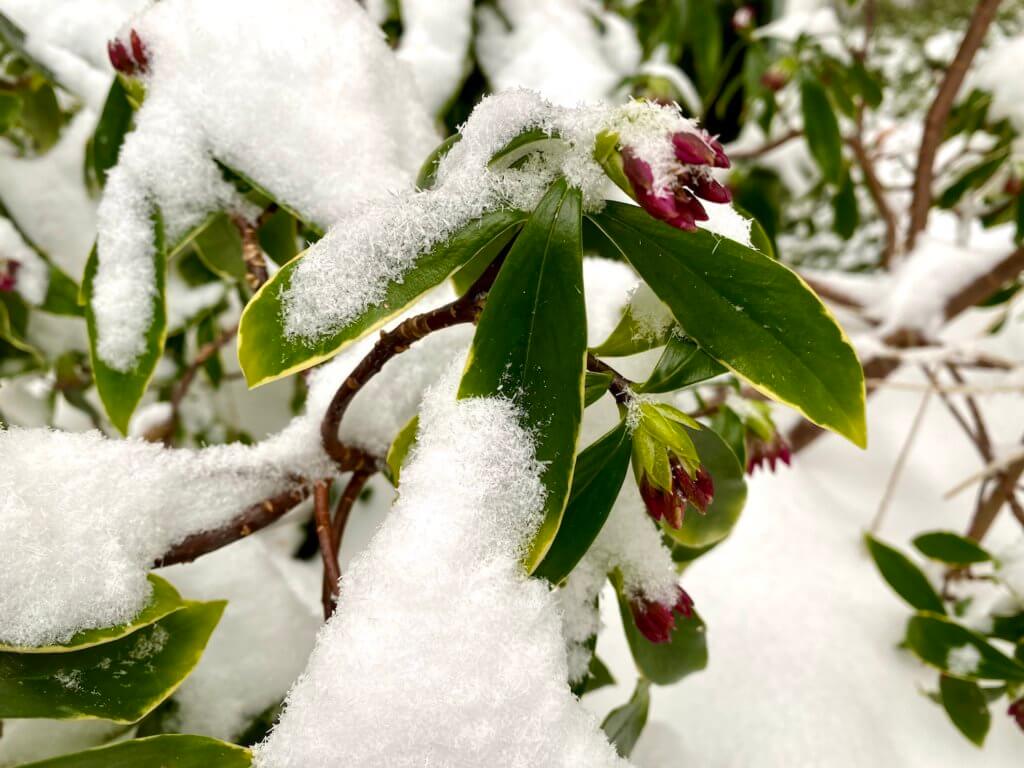
Love is in the air, quite literally, as fluffy snowflakes grace the sky in front of my home. The gentle pieces of frozen particles drift aimlessly to the ground, finding their way into unusual parts of plants, adorning giant trees, and drifting through the quiet streets like frosting on a cake. It feels as if Mother Nature is giving us a nod of love — in the form of pure and gentle snow — and the neighborhood is abuzz in wonder.
I love the snow because our lives get brighter, and the illumination is warm and glowing, even at night. It reminds me of walking with my friend Konstantin from downtown Nuuk, in Greenland, back to his flat which was perched on a hill overlooking the icy blue North Atlantic Ocean.
The night air was frigid and crisp, while amoebas of green, yellow, and purple slowly swirled into formation — lingering a few minutes before performing a dance in the sky. It felt as if we were part of the cosmic light reflecting off the snow covering the North Pole.
The Northern Lights are an other-worldly experience for me, partly because they move so mysteriously in unpredictable patterns and times. They cement the notion that nature cannot be controlled and is powerful and mystical in ways that dwarf humans and our tiny planet Earth, relative to the Universe.
My perspective on the smallness of Earth was shaped earlier in life while trekking through the Himalaya in the Ladakh region of India. One clear night we were graced by the Milky Way star system — so brightly illuminated to the bare eyes that the experience rivals that of the Northern Lights.
The arid, rocky landscape by day shifted into a spectacular planetarium by night, where literally millions of bright lights, chaotic but also oddly organized into a celestial swirl, seemed to spring back to us like a giant cosmic slingshot. Stars from planes don’t seem to offer the powerful feeling of relativity that comes with feet planted firmly on the ground. I’ve felt connected to both Earth and to our smallness at the same time, gazing at the stars from an altitude higher than the summit of Mt. Rainier (14,000 ft).
That high altitude was a precursor to climbing to the summit of Mt. Kilimanjaro — a few years later. The trek covered 60 kilometers, up and back, and included a wide range of topography, flora, and fauna. There were miniature elephants hanging out above the treeline, as well as prehistoric giant groundsels akin to something in a Dr. Seus book — like a hybrid between saguaro cactus and palm trees.
Besides the jubilation of reaching the summit with our entire group of 5, the most amazing experience was the way we were connected to so many diverse accents of nature — one type of jungle more amazing than the next.
Jungles create labyrinths of lovely, dense vegetation that cannot help but infuse oxygen into the world. It feels like these vast patches of towering tropical arbors show their love to the planet by providing air, refreshed and ready to help.
One of my most memorable jungle experiences took place in Malaysia while riding canoes in the Kinabatangan Rainforest on the large island of Borneo. From the rocking vessels we witnessed orangutans hiding in tall grass and proboscis monkeys shouting to get our attention from the twisted branches directly above our heads!
But the tropics are not always loud animals precariously screeching from above. I also appreciate quieter versions of the experience, like observing a prehistoric reptile, the American alligator, resting in the sun below my feet on a planked nature walk in the Florida Everglades.
There, water feels just as abundant as land, and the elements mix beautifully amongst the variety of birds and animals making their home in this national treasure. Although their brains are mostly… reptilian, I wonder about a species that has survived on the planet for so many years. Even once on the brink of extinction, their numbers have rebounded in Florida after a concerted effort to get humans to stop feeding them chicken and steak. What do they know about the world? My lifeless swamp friend, bug eyes lazily glancing up at me, is proof that nature continues on.
Which takes me back to my home in the Pacific Northwest — an active patchwork of tectonic plates smothered with molten lava millions of years ago. Mother Nature took the lava flows and created such beautiful things as The Trail of Ten Falls at Silver Creek State Park in Oregon, and the impressive stacks of rock that often seem teetering on collapse along the Pacfic Ocean coastline — Haystack Rock a prominent example.
But the geological action didn’t subside with the lava flows. The more recent devastation of Mt. St. Helens, with a historic burst of fury on May 18, 1980, offers scientists an amazing laboratory to study the true resiliency of nature. Fish now thrive where millions of bacteria showed up post-eruption to convert boiling sludge filled water into crystal clear lakes. The pocket gopher, still hibernating under the surface during the eruption, popped up afterward and immediately got to work mixing the talcum powder-like dust left by the blast into rich soil from below — helping convert the moonscape into entirely new forests with brilliant shades of green.
Stories like these — of nature — exemplify that love exists everywhere.
Travel gives many gifts to those willing to see the offerings — and always through the lens of nature. Topography, flora, and fauna changes from region to region, keeping it interesting, but evidence of life thriving on this tiny little rock called Earth is available everywhere. No matter where I go, nature reminds me that love, light, and life are universal — always here to access, anywhere.
In moments of deep despair and happy highs, whether digging in the dirt in my yard or walking along a seashore, I’ve looked to my natural surroundings to comfort and support me. And the fact that new buds are pushing through old branches on the shrubs in my yard, even as the snow works hard to cover them back up, is evidence of Mother Nature’s love letter to me that, despite it all, the planet is still rotating. The seasons are right on time.
Our world is suffering in every corner, and despite the mood of the day, I rejoice in knowing that love exists all around us in nature. It doesn’t take a trip around the world to realize this — although traveling helps one feel the relative nature of life on our planet.
On this St. Valentine’s celebration, remember that you are loved — no matter what — and all you need to do to access this everlasting, unconditional affection is to go outside (or bring flowers and plants inside). Literally, in any location, nature’s miracles are excited to meet you.
From my heart to yours, thanks for reading and supporting my work.
Happy Valentine’s,
Matthew
All this talk of snow…
reminds me of an article I recently wrote about snowshoeing in the Cascade Mountains. Although this was at White Pass, WA, the inspiration might encourage other Winter adventures in your neck of the woods. Click on the photo below.

